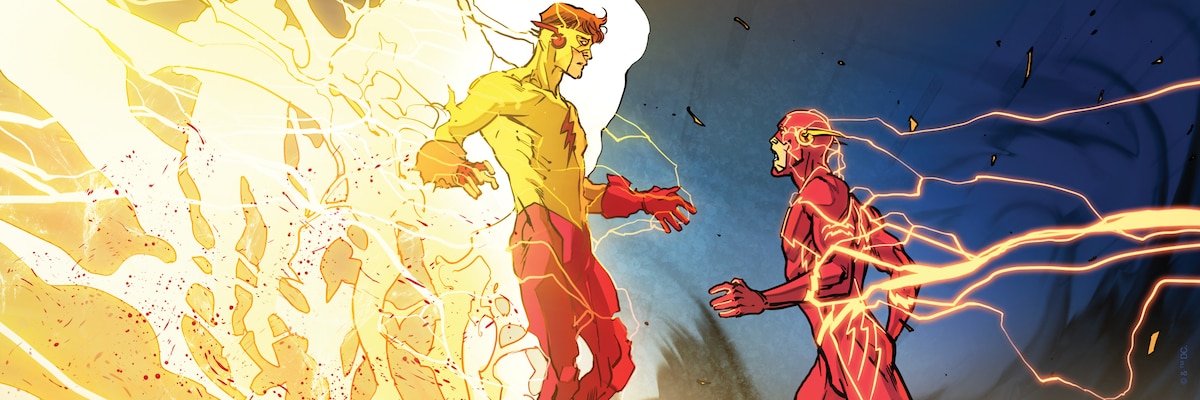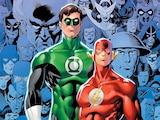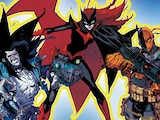One of the reasons superheroes fascinate us is their ability to do impossible things. Some heroes fly, some are impervious to harm and some can turn invisible. But as impossible powers go, few present more impossibilities to physics as we understand it than super speed. The more you really think about the Flash, the more questions begin to present themselves: Why doesn’t the Flash’s skin burn off from the friction of air resistance? How does he hear or speak when he runs faster than sound? Why don’t the g-forces tear him apart?
The only way the “Flash Facts” as they are could really work is in fiction. And so, Flash writer Mark Waid created a concept to resolve every impossibility that super speed in the DC Universe creates—something he called the “Speed Force.”
The Origins of the Speed Force
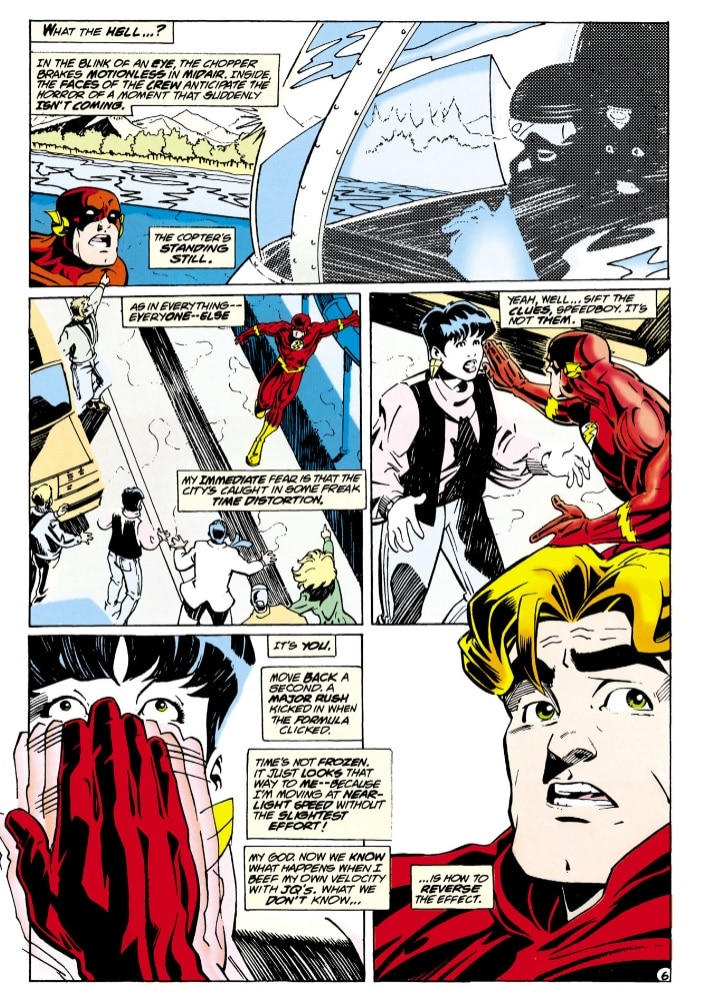
That’s arguably the single most important thing to know about the Speed Force: it’s designed to explain the Flash’s powers. The second important thing you should know is that despite its ubiquity in Flash stories today—like the yellow sun to Superman or the inability to seek proper grief counseling to Batman—the Speed Force never actually came up during Jay Garrick or Barry Allen’s original tenures as the Flash. It was retroactively applied to them after the fact. The first Flash to learn about the Speed Force was Wally West during his time as the Scarlet Speedster from 1987 to 2010.
In 1994’s The Flash #91, the Speed Force is introduced as a concept for the first time when Wally attempts to augment his own speed using Johnny Quick’s super speed formula and begins moving so fast that he effectively stops time. It’s there that Max Mercury, a contemporary Golden Age speedster to Jay Garrick, first begins explaining Wally’s connection to the Speed Force.
While the Speed Force is most commonly associated with super speed, it can also manifest as a host of related temporal abilities, like the ability to control one’s age or manipulate their place in a species’ evolutionary chain. But just to keep things simple, let’s keep the focus on speed.
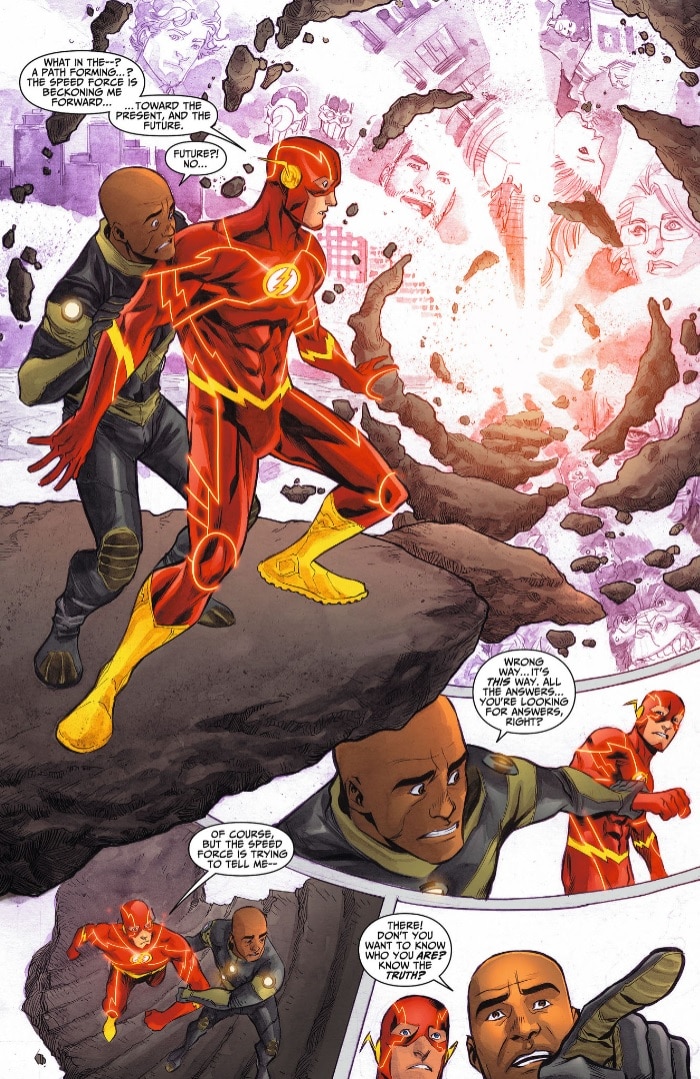
Now that we’ve established what it’s for and its historical context, we can talk about what it means to the universe itself. The Speed Force is a plane of pure energy tied to the universe from which metahumans are able to draw. Some advanced civilizations and mad scientists have been able to tap into it through technological means, but the Speed Force mainly seems to be attracted to speedsters. You may know the story that Barry Allen got his powers when a lightning bolt struck while he was standing beside his supply of forensic chemicals. That was no mere electrical discharge, as we learn in Waid’s run, but a bolt of energy from the Speed Force itself channeling into Barry Allen—and once again, only a couple of years later, into Wally West.
Well, strictly speaking, that hasn’t ALWAYS been true. Let’s address a different origin for the Speed Force you may have heard. In 2009’s The Flash: Rebirth, Geoff Johns wrote that Barry Allen actually CREATED the Speed Force himself when a regular bolt of lightning struck him, activating his metagene. Once he started using his own super speed, the Speed Force began to generate as an effect of his continued use of his powers, stretching omnidirectionally in time and space to empower all the speedsters before him and since. However, that origin was countermanded in the New 52’s The Flash #13, where it’s explicitly shown that the Speed Force has always existed, and in the 2016 Flash series, which presents the Speed Force as only one of several similar Forces. (We’ll get to that later.)
Exploring the Speed Force
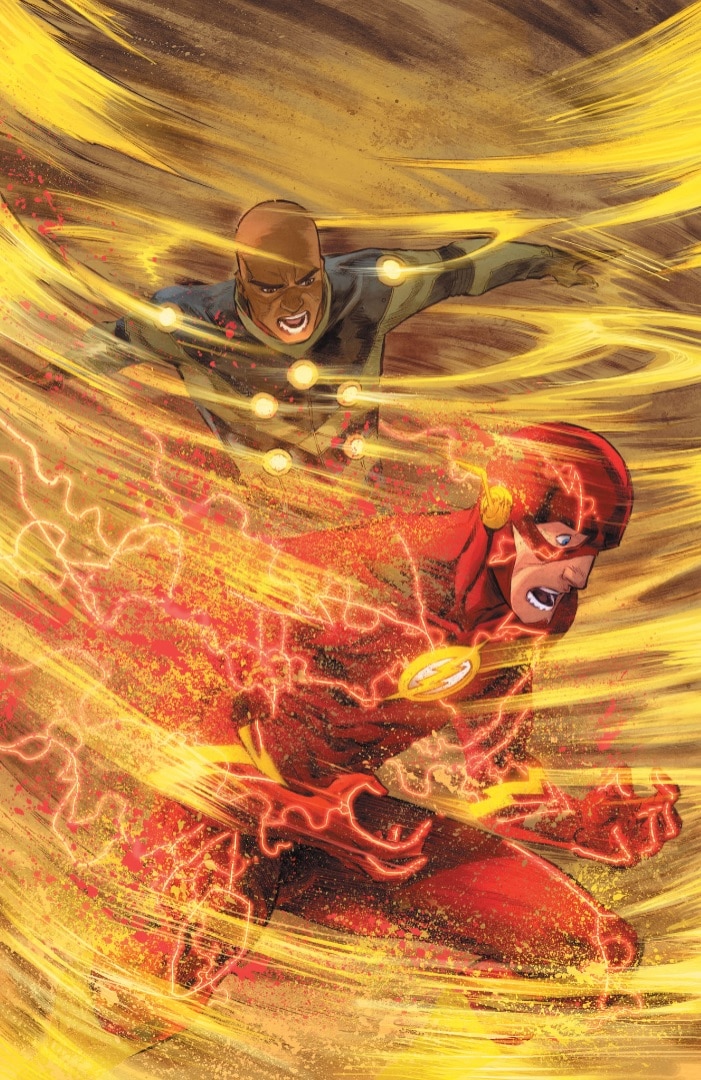
It’s important to know that the Speed Force isn’t just a source of power, but a place. It’s a plane of existence that speedsters can enter by achieving a high velocity, and which they can use to travel anywhere in space and time. If a speedster loses control of their speed, they may even find themselves trapped in the Speed Force—as Barry Allen was for decades between Crisis on Infinite Earths and Final Crisis. (This also happened for a bit on The CW’s Flash.)
The point in the Speed Force that entraps speedsters was identified by Max Mercury as the “Starting Line,” and whenever a speed-based superhero appears to be missing in action, that’s where you can assume they are. There are other specific landmarks and locations within the Speed Force which Barry visits through his New 52 series, suggesting it may be a whole universe in and of itself, with “islands” of tangible reality—perhaps hosting, or once hosting, native inhabitants of its own.
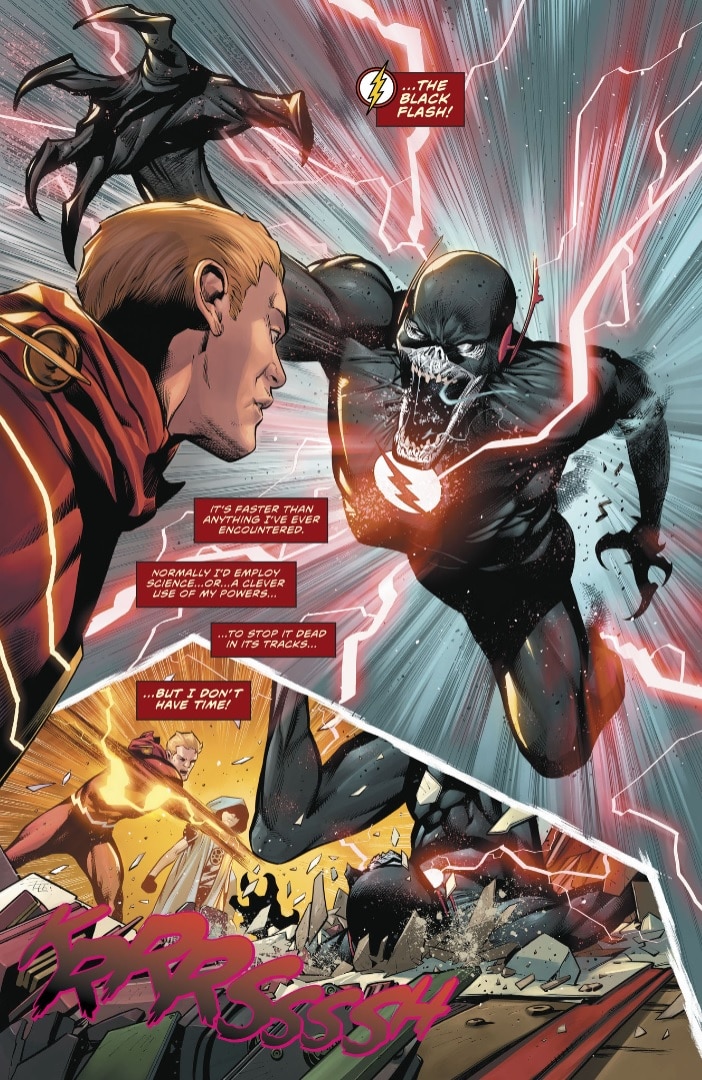
That brings us to one of the Speed Force’s greatest mysteries—the Black Flash. Appearing like a sallow, corpselike Barry Allen in his signature Flash suit and racing after speedsters to their deaths, the true nature of the Black Flash has never been fully understood. What’s been suggested is that the Black Flash acts as the Speed Force’s own defense mechanism—a built-in security system to protect its existence. Exactly how speedsters pursued by the Black Flash endanger the Speed Force is something we can only guess at, but it may be related to the amount of energy a Speedster draws from it. You can think of the Black Flash as a bartender, calling your tab when you’ve had one drink too many from the Speed Force well.
One final important thing about the Black Flash—you’ll soon be seeing him on the big screen in the upcoming Flash movie. Perhaps we’ll learn a bit more about him then.
The Other Forces

Recently, the Black Flash also emerged to deal with encroaching threats from the other “Forces” that exist in the DC Universe.
In Joshua Williamson’s 2016 Flash comics, we learn that the Speed Force is just one source of superhuman ability that can get drawn upon by receptive metahumans. Adjacent to the Speed Force is the intellect-enhancing Sage Force and the physicality-enhancing Strength Force. There are also a couple of Forces which exist to counterbalance the Speed Force: the Still Force, which represents the inertia to the Speed Force’s motion, and the Negative Speed Force, artificially created by the Reverse-Flash to eat away at the Speed Force. 2003’s The Flash #196 also introduces the rarely explored “Forever Force,” which Wally’s own nemesis Hunter Zolomon uses to control time. (There’s a Flash Fact for you: Barry’s Reverse-Flash is a speedster, but Wally’s Zoom is not. He just manipulates time to the point that he appears to be moving at super speed.)
But I Still Have Questions!
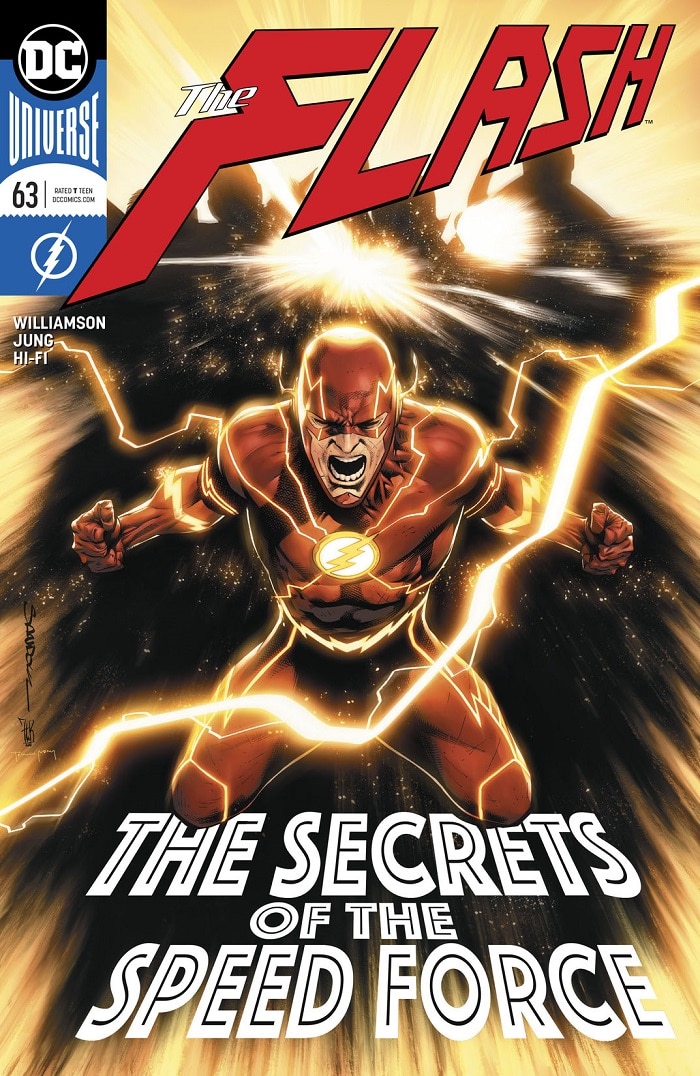
Don’t worry, we all have questions about the Speed Force. Exploring its nuances and peculiarities has been a running theme throughout Flash stories for the past thirty years. As much as we’d like to understand how the Speed Force works, that’s not what it’s for. The Speed Force was introduced to solve narrative questions, not to create them. If there’s anything about super speed that doesn’t make sense to you, that’s not surprising because it’s the result of the Flash’s universe interacting through him with a different one, with its own rules. One thing that’s apparent is that every writer has their own idea of what the Speed Force really is, and no one interpretation is more correct than the other.
Our universe is a very big place. We can assume that the Speed Force is too. We’d stop to examine it all, but that’s the funny thing about the Speed Force—to stick with it, you have to keep moving.
Alex Jaffe is the author of our monthly "Ask the Question" column and writes about TV, movies, comics and superhero history for DC.com. Follow him on Twitter at @AlexJaffe and find him in the DC Community as HubCityQuestion.
